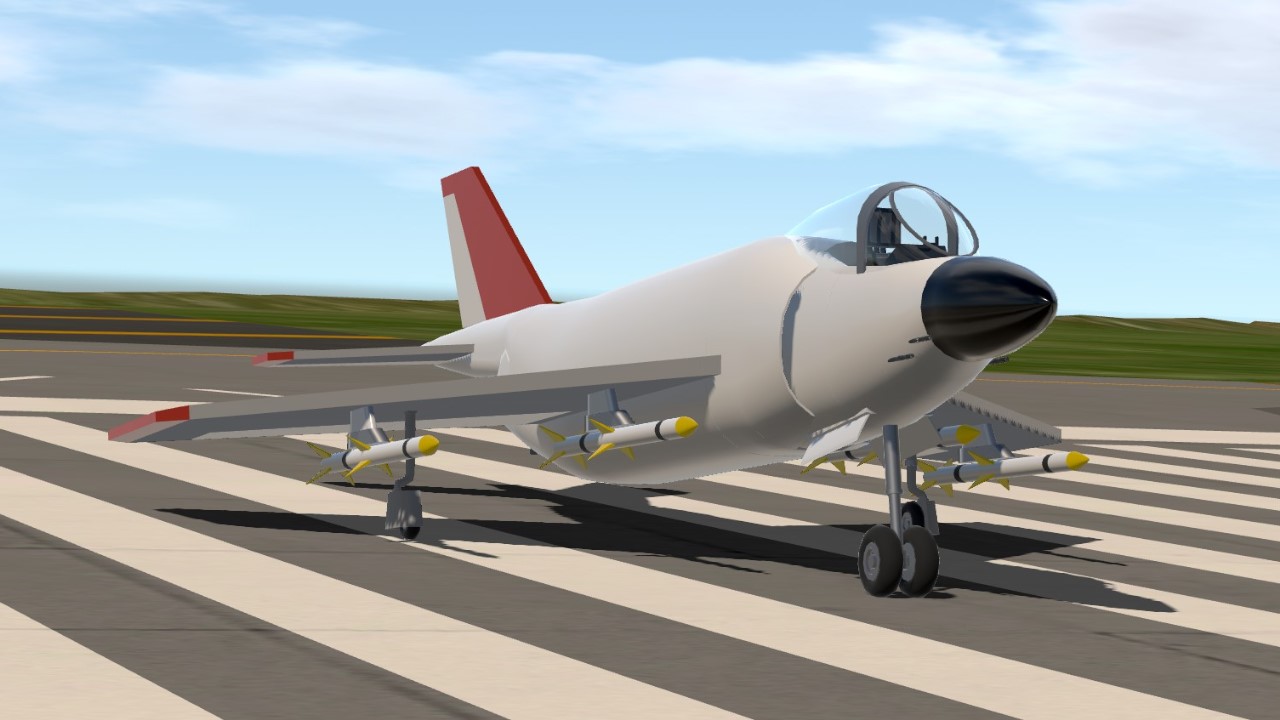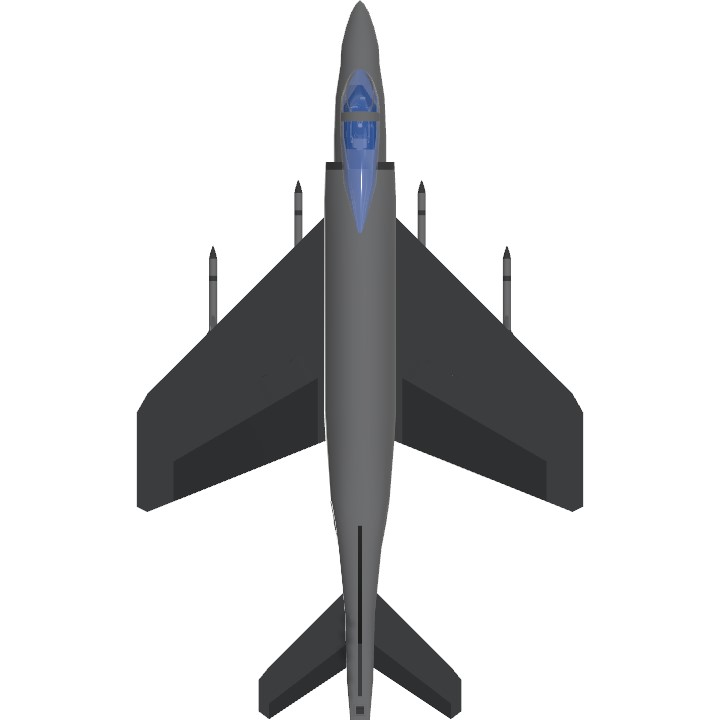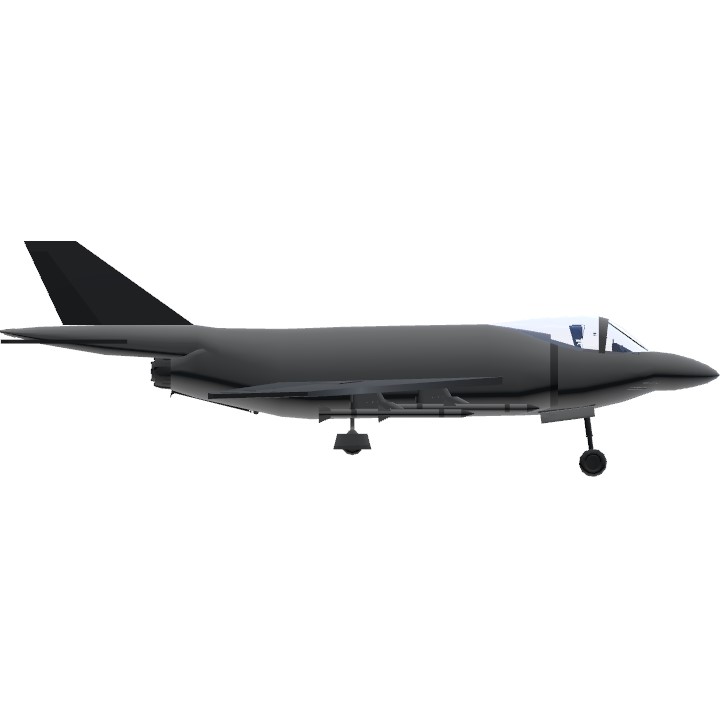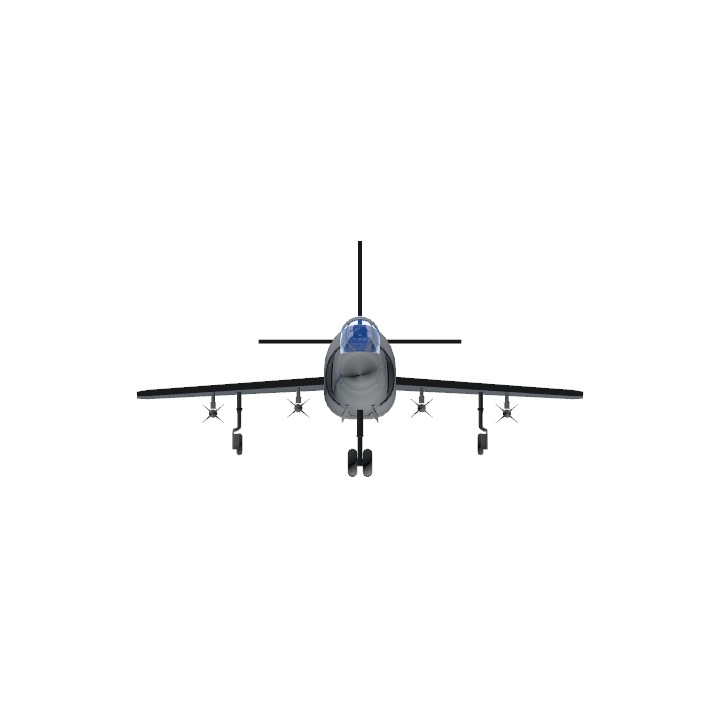From Wikipedia:
The McDonnell F3H Demon is a subsonic swept-wing United States Navy
carrier-based jet fighter aircraft. The successor to the F2H Banshee, the
Demon was originally designed to use the Westinghouse J40 engine, but had
to be redesigned to accept the Allison J71 after the J40 suffered severe
problems and was ultimately abandoned. Though it lacked sufficient power
for supersonic performance, it complemented day fighters such as the
Vought F8U Crusader and Grumman F11F Tiger as an all-weather missile-
armed interceptor until 1964.
It was withdrawn before it could serve in Vietnam when both it and the
Crusader were replaced on Forrestal-class and similar supercarriers by
the McDonnell Douglas F-4 Phantom II. McDonnells Phantom, which was
equally capable against ground, fighter, and bomber targets, bears a
strong family resemblance. as it was conceived as an advanced development
of the Demon. The supersonic United States Air Force F-101 Voodoo was
similar in layout, but was derived from the earlier XF-88 Voodoo, which
also influenced the Demons layout.

I decided with this aircraft to challenge myself to where you could use the missile system without the excess lock circle and target displays. As such, I need to show you how it works.

Controls:
Red Button: Engines (AG8)
Red Lever: Gear
Yellow Lever: Flaps (VTOL)
Throttle: Throttle (Throttle)
Gray Lever: Hook (AG3)
Blue Lever: Trim
Armament:
4x AIM-7 Sparrow
600 rounds of ammunition. Don't waste them. Indicator is next to the radar.
Armament controls are on the stick.
Oh yeah, one more thing. the aircraft has no labels outside of the cockpit.
Specifications
Spotlights
- This craft is curated
General Characteristics
- Created On Windows
- Wingspan 34.6ft (10.5m)
- Length 56.2ft (17.1m)
- Height 18.3ft (5.6m)
- Empty Weight 25,529lbs (11,579kg)
- Loaded Weight 37,840lbs (17,164kg)
Performance
- Power/Weight Ratio 0.741
- Wing Loading 67.4lbs/ft2 (329.0kg/m2)
- Wing Area 561.6ft2 (52.2m2)
- Drag Points 4447
Parts
- Number of Parts 134
- Control Surfaces 7
- Performance Cost 912




